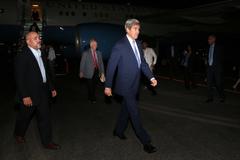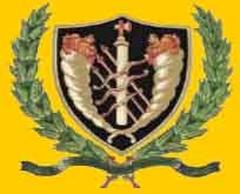Cartagena de Indias: Visiting Hours, Tickets, and Historical Sites Guide
Date: 04/07/2025
Introduction: Cartagena de Indias and Its Enduring Legacy
Cartagena de Indias, perched on Colombia’s Caribbean coast, stands as a vibrant testament to centuries of history, multicultural exchange, and architectural splendor. Known as the “Jewel of the Caribbean,” Cartagena seamlessly blends its colonial-era fortifications and UNESCO World Heritage–listed old town with dynamic neighborhoods and a pulsating contemporary cultural scene. Founded in 1533 by Spanish conquistador Pedro de Heredia, the city’s strategic port attracted fortune-seekers and invaders alike, shaping a resilient spirit reflected in its moniker, “La Heroica.”
Today, Cartagena captivates travelers with its cobbled streets, pastel-hued houses, robust cuisine, and festive traditions rooted in a fusion of Indigenous, African, and European influences. This guide provides comprehensive information for visitors, including detailed visiting hours, ticketing for major attractions, practical travel tips, and an overview of Cartagena’s most significant historical sites and cultural events. Whether you’re a history buff, a foodie, or a festival enthusiast, Cartagena offers an immersive journey into Colombia’s Caribbean heritage (Aventure Colombia, Two Travel, Medellin Guru).
Table of Contents
- Introduction: Cartagena’s Significance
- Historical Overview: Founding and Colonial Era
- Multicultural Heritage and Local Culture
- Architectural and Urban Highlights
- Essential Visitor Information: Visiting Hours, Tickets, and Tours
- Role in Colombian and Regional Identity
- UNESCO World Heritage Status and Preservation
- Contemporary Cultural Scene
- Must-See Attractions: Visiting Hours, Tickets, and Tips
- Local Cuisine: Essential Dishes and Where to Eat
- Major Events and Festivals
- Transportation and Accessibility
- Safety Tips for Travelers
- Frequently Asked Questions (FAQ)
- Visual and Interactive Resources
- Conclusion and Planning Advice
- References
Historical Overview: Founding and Colonial Era
Founded in 1533, Cartagena rapidly rose to prominence as a key port within the Spanish colonial empire. The city’s prosperity, fueled by trade in gold, silver, and enslaved Africans, made it a target for pirates and rival colonial powers. This necessitated the construction of extensive fortifications, including the iconic city walls and the imposing Castillo San Felipe de Barajas. The “Ciudad Amurallada,” or Walled City, stands as a remarkable example of Spanish military engineering, its ramparts having withstood repeated sieges, including the infamous attack by Sir Francis Drake in 1586 (Two Travel, Medellin Guru).
Multicultural Heritage and Local Culture
Cartagena’s legacy is deeply shaped by the convergence of Indigenous, African, and European cultures. As a major port for the Spanish Empire, Cartagena became a melting pot where languages, religions, music, and culinary traditions intertwined. The influence of West and Central African communities is especially notable in local festivals, music genres like champeta, and the city’s vibrant street life. Annual celebrations such as the Independence Festival (November) showcase the city’s resilience and multicultural spirit, while neighborhoods like Getsemaní pulse with creativity and Afro-Caribbean pride (Aithor, La Carta).
Architectural and Urban Highlights
Cartagena’s urban landscape is a showcase of colonial architecture, where cobblestone streets lead to grand plazas, baroque churches, and brightly colored homes adorned with bougainvillea. The Old City, a UNESCO World Heritage Site, is home to landmarks such as the Cathedral of Santa Catalina de Alejandría and the Palace of the Inquisition, exemplifying the city’s blend of Spanish, African, and Indigenous influences. Beyond the main attractions, hidden gems like Las Bóvedas and Castillo de San Sebastián del Pastelillo add layers to the city’s architectural narrative (Conocer Sudamerica, Secret Attractions).
Essential Visitor Information: Visiting Hours, Tickets, and Tours
Key Attractions and Entry Details
| Site | Visiting Hours | Ticket Price (COP) | Accessibility/Notes |
|---|---|---|---|
| Ciudad Amurallada (Walled City) | Always open | Free | Museums inside may charge fees |
| Castillo San Felipe de Barajas | 8:00 AM – 6:00 PM | ~25,000 | Guided tours recommended |
| Convento de la Popa | 8:00 AM – 5:00 PM | ~10,000 | Steep access, taxi recommended |
| Palacio de la Inquisición | 10:00 AM – 5:00 PM | ~12,000 | Closed Mondays |
| Museo del Oro Zenú | 10:00 AM – 5:00 PM | ~10,000 | Closed Mondays |
Tickets are available at entrances or online; pre-booking is advised during peak seasons. Guided tours (on foot, by bike, or by boat) enrich the experience with expert insights.
Accessibility varies—historic sites may have uneven surfaces or limited wheelchair access. Comfortable shoes and sun protection are recommended.
Role in Colombian and Regional Identity
Cartagena’s successful resistance against sieges and its early declaration of independence in 1811 made it a symbol of resilience and liberty, earning its title “La Heroica.” The city remains a cultural beacon, with public spaces and festivals serving as platforms for artistic and social expression, reinforcing its role in shaping Colombia’s national identity (Aithor).
UNESCO World Heritage Status and Preservation
Recognized by UNESCO in 1984, Cartagena’s walled city and fortifications are lauded for their exceptional preservation and historical value. Ongoing restoration projects maintain the city’s architectural integrity, while local initiatives promote the safeguarding of intangible heritage—music, dance, and culinary traditions (Two Travel).
Contemporary Cultural Scene
Cartagena’s creative energy is palpable in neighborhoods like Getsemaní, a hub for street art, live music, and avant-garde cuisine. The city hosts renowned festivals such as the Hay Festival (literature), International Film Festival (FICCI), and the Afrogena Festival, drawing artists and audiences from across the globe (Medellin Guru, La Carta).
Must-See Attractions: Visiting Hours, Tickets & Practical Info
The Walled City (Ciudad Amurallada)
- Hours: Open 24/7 for exploration; museums/shops generally 9:00 AM–6:00 PM.
- Tickets: Free to enter; museum/site entry fees apply.
- Highlights: Plaza Santo Domingo, Plaza de los Coches, Clock Tower Gate, Cathedral of Cartagena.
- Accessibility: Cobblestone streets; some museums are wheelchair accessible.
Castillo San Felipe de Barajas
- Hours: 8:00 AM–6:00 PM daily.
- Entry: ~25,000 COP; discounts for students/seniors.
- Guided tours available; steep stairs and uneven terrain.
- How to get there: 2 km from Walled City, walk or taxi.
Getsemaní Neighborhood
- Hours: Always open; best enjoyed from mid-morning to late evening.
- Tickets: None required.
- Attractions: Street art, lively plazas, local eateries.
Convento de la Popa
- Hours: 9:00 AM–5:00 PM daily.
- Entry: ~10,000 COP.
- Access: Taxi recommended due to steep ascent.
Bocagrande and Beaches
- Beaches: Public, free access; amenities may vary. For pristine sands, consider Rosario Islands or Playa Blanca (day trips by boat).
Museums and Cultural Spaces
- Museo del Oro Zenú: 9:00 AM–5:00 PM, ~15,000 COP.
- Palacio de la Inquisición: 10:00 AM–6:00 PM, ~12,000 COP.
- Red de Museos: Visit Cartagena Government Cultural Agenda for current schedules.
Local Cuisine: Essential Dishes and Where to Eat
- Arepa de Huevo: Corn patty filled with egg; street vendors in Getsemaní and the Walled City.
- Pescado Frito Plate: Fried whole fish with coconut rice and plantains; beachside eateries.
- Cazuela de Mariscos: Seafood stew; local restaurants citywide.
- Mote de Queso: Cheese and yam soup.
- Posta Negra Cartagenera: Beef in sweet-savory sauce.
- Street food tours offer tastings and culinary history.
Dining options range from street vendors and local markets (Mercado de Bazurto) to fine dining in the Walled City.
Major Events and Festivals
- Independence Festival (Fiestas de Independencia): November, parades and music.
- Hay Festival: Late January/early February, literature and arts.
- International Music Festival: January, classical concerts in historic venues.
- FICCI (Film Festival): March, open-air screenings.
- Palenque Drum Festival: October, Afro-Colombian music.
- Kite Festival: August, family-friendly beach event.
- Festival del Frito: January/February, street food.
(La Carta)
Transportation and Accessibility
- Arrivals: Rafael Núñez International Airport (CTG) is 5 km from the city center.
- Getting Around: Walk in the historic core; taxis and ride-hailing apps (Uber/Cabify) elsewhere.
- Public Transport: Transcaribe BRT and buses; boat trips to islands.
- Accessibility: Cobblestones can be challenging; modern hotels in Bocagrande offer better access.
Safety Tips for Travelers
- Stick to well-traveled areas and avoid isolated neighborhoods at night.
- Use official taxis or ride-sharing apps.
- Keep valuables secure and be vigilant during festivals.
- Tap water is not recommended; drink bottled water.
- Emergency number: 123.
Frequently Asked Questions (FAQ)
Q: What are the typical visiting hours for historical sites?
A: Most open 8:00/9:00 AM to 5:00/6:00 PM; the Walled City is always accessible.
Q: How do I buy tickets for major attractions?
A: On-site or via official tourism websites; pre-booking is suggested in high season.
Q: Are there English-speaking tours?
A: Yes, many tours are offered in English.
Q: Is Cartagena safe for solo travelers?
A: Generally yes in tourist areas, with standard precautions.
Q: What’s the best time to visit?
A: February–April and July offer good weather and manageable crowds.
Visual and Interactive Resources
- Explore virtual tours and interactive maps at Cartagena Virtual Tour.
- For updated cultural and historical information, visit Official Cartagena Tourism.
Conclusion and Planning Advice
Cartagena de Indias is a city where history, culture, and the Caribbean spirit converge. With its meticulously preserved streets, monumental forts, dynamic festivals, and renowned culinary offerings, Cartagena promises a journey through time and tradition. Plan ahead by checking visiting hours, securing tickets, and considering guided tours to deepen your appreciation of this remarkable city. Enhance your experience by downloading the Audiala app for offline guides, tickets, and insider tips. Stay connected for the latest Cartagena travel inspiration—your adventure awaits!
References and Further Reading
- Aventure Colombia: What to Do in Cartagena
- Two Travel: Cartagena History
- Medellin Guru: Places to Visit in Cartagena
- Aithor: The Cultural and Historical Significance of Cartagena
- La Carta: Cartagena Event Calendar
- Conocer Sudamerica: Best Tourist Sites in Cartagena
- Secret Attractions: Cartagena Undiscovered Historical Sites
- Official Cartagena Tourism
- Getsemaní Cultural Guide
- Cartagena Virtual Tour
- Salt in Our Hair: Cartagena Travel Tips and Safety

